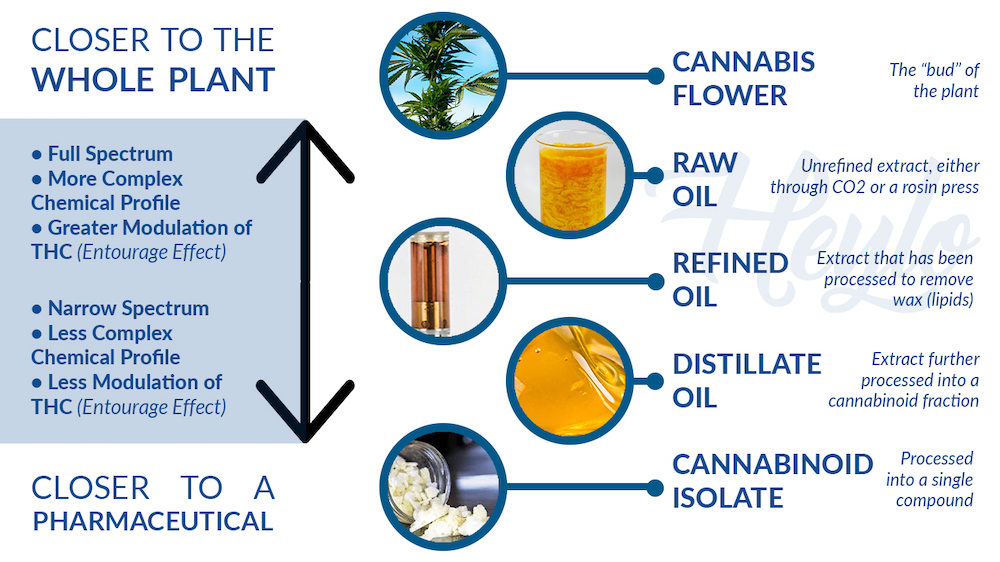
Before you can consider what strain might be a fit for you it is critical to consider the type of product to be consumed. The same strain as a distillate versus a raw oil will affect you differently. To make an educated decision about your personal experience, it is critical to distinguish distillate from full-spectrum extract, and what other nuances exist within cannabis oils. By knowing the difference in chemistry between these product types you will be able to make better buying decisions that ultimately lead to better experiences with cannabis.

Distillate is cannabis oil that has been heavily refined and separated into a cannabinoid-dominant fraction. This means the plant goes through extensive processing to narrow in on a specific subset of compounds, e.g., cannabinoids.
The first step in making distillate is to extract cannabis oil, typically through ethanol, hydrocarbon. or CO2 extraction. Raw cannabis oil is winterized and waxes are removed through vacuum filtration. Refined cannabis oil is then run through a short path distillation system to separate out various fractions based on molecular weight. The cannabinoid fraction is what will be sold as distillate, often with added terpenes or flavorings in vape cartridges or pods. Heylo never uses distillate.
Distillate has a limited profile of compounds interacting with your ECS compared to full-spectrum cannabis oil or the cannabis flower (bud). A more narrow spectrum means less modulation of effects between the various compounds. The Entourage Effect dictates that the various cannabinoids, terpenes, flavonoids and other compounds in cannabis work together synergistically to create the effects of being “high”, as well a supporting overall wellness and medicinal applications. If you take away some of these compounds you close the door on a well-rounded experience and open the door on potentially “overdoing it” with any one compound. THC can be particularly impactful on its own - inspiring paranoia and worsening anxiety at high doses in some people, especially without the modulation of CBD, CBG, and cannabis terpenes.

Full-spectrum cannabis oil is named such because it provides a wide array of the compounds (chemicals) found in cannabis, including cannabinoids, terpenes, flavonoids, and potentially the plants waxes and potentially unknown native compounds.
One important thing to note about “full-spectrum” is that there is no regulation guiding what “full-spectrum” is defined to be. Unlike the term “Organic”, anyone can claim their product is “full-spectrum”. Therefore it is critical the source provides trusted third-party analytics with the product. Quick tip: Consider search terms such as "pure CBD", "rare cannabinoids" and "full-bud".
Full-spectrum cannabis oil can be made a variety of different ways, including through pressure along (e.g., rosin press), ethanol extraction, and supercritical CO2 extraction. CO2 Extraction is the method Heylo employs because it is safe, clean, and versatile. The versatility of CO2 allows Heylo to target a very wide array of compounds in cannabis during extraction and create an oil that has similar chemistry to the flower used for the extraction. Learn more about Heylo’s RawX extraction process here.
Ultimately, what makes full-spectrum cannabis oil superior to distillate or “ultra-refined” oils is the experience it enables. This occurs through the Entourage Effect, explained earlier. If you look for products with diverse chemistry, native terpenes, and minor cannabinoids you can increase the likelihood of benefiting from the Entourage Effect. Check out resources regarding The Entourage Effect and other cannabis chemistry topics on the Heylo Scientific Reference page.